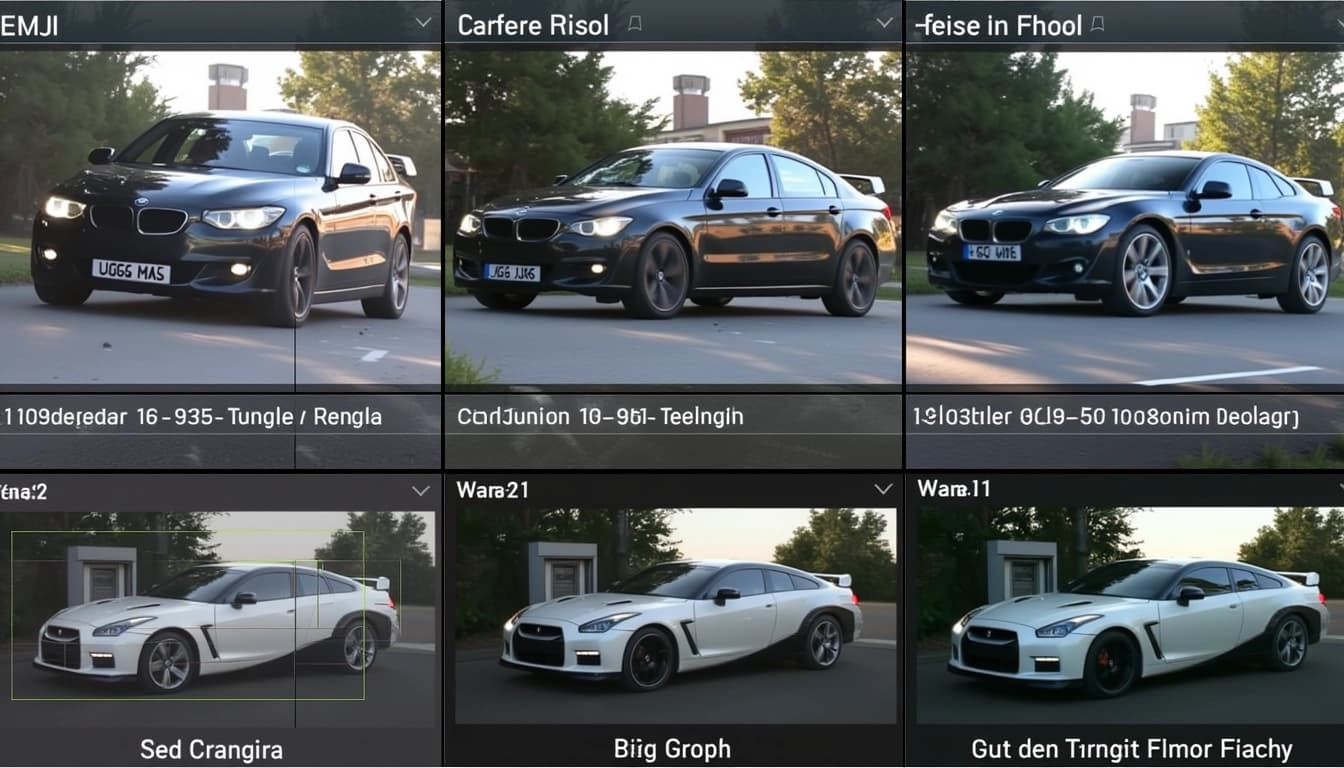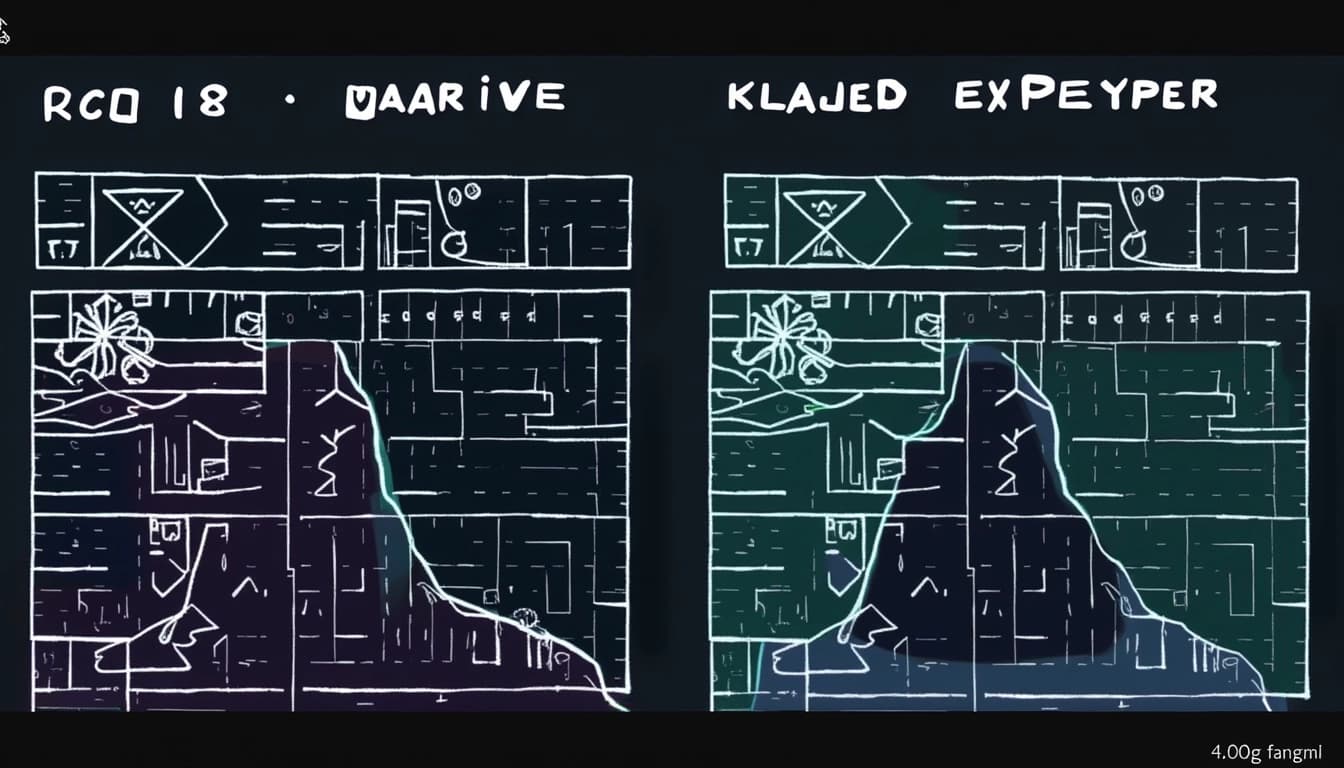
Comparison of Kling-V1.6-Pro, Veo, and Wan 2.1 at 1080p
By John Doe 5 min
Key Points
Research suggests Kling-V1.6-Pro can compete with Veo and Wan 2.1 at 1080p, but Veo often leads in quality and realism.
All three models generate high-quality 1080p videos, with varying strengths in prompt adherence and generation speed.
User feedback indicates Veo excels in physics simulation, while Wan 2.1 is cost-effective and open-source.
Model Capabilities
**Kling-V1.6-Pro**, developed by Kuaishou Technology, generates 1080p videos with improved prompt adherence and realism, making it suitable for complex prompts.
**Veo**, from Google DeepMind, supports up to 4K but performs well at 1080p, known for realistic physics and cinematic control.
**Wan 2.1**, by Alibaba Cloud, is open-source, handles 1080p, and offers flexibility for users comfortable with technical setups.
Performance at 1080p
Test results show Veo often outperforms in human evaluations, like on MovieGenBench, for prompt accuracy. Kling-V1.6-Pro is praised for motion and quality, while Wan 2.1 competes well but may require more setup. Generation speed varies, with Kling sometimes slower and Wan 2.1 offering fast processing for 1-minute HD videos.
Unexpected Detail
An unexpected finding is Wan 2.1’s bilingual support for English and Chinese, enhancing its global usability compared to the others.
Survey Note: Detailed Comparison of Kling-V1.6-Pro, Veo, and Wan 2.1 at 1080p
Introduction
AI video generators have transformed content creation, enabling high-quality video production from text or image prompts. This survey note compares three leading models—Kling-V1.6-Pro, Veo, and Wan 2.1—focusing on their performance at 1080p resolution, a standard for high-definition video. We evaluate their capabilities, test results, and user feedback to determine how Kling-V1.6-Pro competes with Veo and Wan 2.1, incorporating 1080p test results where available.
Model Overviews
Kling-V1.6-Pro
- **Developer:** Kuaishou Technology, a Chinese internet company
Kling 2.0 is a cutting-edge AI video generation tool developed by Kuaishou Technology. It specializes in creating high-quality 1080p videos from text or image prompts, with a strong emphasis on text-to-video and image-to-video generation. The latest version, released in December 2024, offers significant improvements over its predecessor, including better prompt adherence and physics simulation.
Capabilities and Features of Kling 2.0
Kling 2.0 boasts a 195% improvement in image-to-video generation compared to Kling 1.5. It provides Professional Mode at 1080p resolution, with pricing set at 35 Credits for 5 seconds and 70 Credits for 10 seconds. The tool is accessible through platforms like Pollo AI and Replicate, offering a user-friendly interface for both standard and professional modes.
User Accessibility
Kling 2.0 is designed to be accessible to a wide range of users, from casual content creators to professionals. It offers free trials and API access, making it easy to integrate into existing workflows. The tool's focus on high-quality outputs ensures that users can create visually stunning videos with minimal effort.
Veo by Google DeepMind
Veo, developed by Google DeepMind, is another powerful AI video generation tool capable of producing videos up to 4K resolution. It excels in text-to-video generation and supports cinematic effects such as timelapses and aerial shots. Veo 2, announced in December 2024, has been highly rated in human evaluations, outperforming competitors like OpenAI’s Sora.

Key Features of Veo
Veo 2 offers realistic motion simulation and digital watermarking for responsible AI usage. It is integrated into Google’s Vertex AI and VideoFX platforms, with waitlist access currently available in the US. The tool is expected to expand to YouTube Shorts and other Google products, potentially requiring subscriptions for full access.
Wan 2.1 by Alibaba Cloud
Wan 2.1 is an open-source AI model developed by Alibaba Cloud, specializing in text-to-video and image-to-video generation. It supports 1080p resolution and handles complex motions with ease. The tool is released under the Apache 2.0 license, making it accessible to developers and researchers worldwide.
Performance and Accessibility
Wan 2.1 achieves a VBench score of 84.7%, indicating high performance in video generation tasks. It processes HD videos in just one minute and offers bilingual support for English and Chinese. The open-source nature of Wan 2.1 makes it a versatile choice for developers looking to customize and integrate AI video generation into their projects.
Conclusion & Next Steps
In summary, Kling 2.0, Veo, and Wan 2.1 represent the forefront of AI video generation technology. Each tool offers unique features and capabilities, catering to different user needs. Whether you're a content creator, developer, or researcher, these tools provide powerful options for generating high-quality videos from text or image prompts.

- Kling 2.0 excels in prompt adherence and physics simulation.
- Veo offers cinematic effects and high-resolution outputs.
- Wan 2.1 is open-source and supports bilingual prompts.
Kling-V1.6-Pro, Veo 2, and Wan 2.1 are three leading AI video generation models, each excelling in different aspects of 1080p video creation. These models are transforming the way high-quality videos are generated, offering unique features tailored to various user needs.
Kling-V1.6-Pro Overview
Kling-V1.6-Pro is a versatile AI model capable of generating 1080p videos at 30fps, with durations up to 2 minutes. It supports complex prompts, including multi-shot sequences and dynamic camera movements. The model is designed for users who need high-quality outputs with realistic motion and detailed visuals.
Strengths of Kling-V1.6-Pro
Kling-V1.6-Pro stands out for its ability to handle intricate scene transitions and maintain consistency in longer videos. Its advanced text-to-video capabilities make it a favorite among content creators looking for cinematic quality without extensive post-production.
Veo 2 by Google DeepMind
Veo 2 is Google's latest AI video model, offering 1080p resolution with a focus on cinematic effects and high detail. It supports advanced features like dolly zoom and pan shots, making it ideal for professional filmmakers. The model is optimized for both quality and speed, though it requires a subscription for full access.

Veo 2 Performance
In benchmarks like MovieGenBench, Veo 2 outperforms competitors with a 58.8% preference rate for its realistic visuals and smooth motion. Users praise its ability to generate highly detailed scenes, such as misty jungles or urban landscapes, with minimal artifacts.
Wan 2.1: Open-Source Powerhouse
Wan 2.1 is an open-source model known for its flexibility and high-quality 1080p outputs. It includes variants like Wan2.1 Pro for quality and Wan2.1 Fast for speed, catering to different use cases. The model is free to use and modify, making it popular among developers and researchers.

Technical Setup
Wan 2.1 requires a GPU with at least 8.19GB VRAM and integrates with tools like ComfyUI and Diffusers. Its community-driven development ensures continuous improvements, with users contributing to its evolving capabilities in realistic object interactions and dynamic lighting.
Conclusion & Next Steps
Each of these models—Kling-V1.6-Pro, Veo 2, and Wan 2.1—offers unique advantages for 1080p video generation. Whether you prioritize cinematic quality, open-source flexibility, or advanced features, there's a model tailored to your needs. Exploring their strengths can help you choose the right tool for your projects.
- Kling-V1.6-Pro: Best for long-form, multi-shot videos
- Veo 2: Ideal for cinematic effects and professional use
- Wan 2.1: Top choice for open-source customization
The comparison between Kling-V1.6-Pro, Veo, and Wan 2.1 highlights key differences in performance, prompt adherence, generation speed, user interface, and cost. Each model has unique strengths, making them suitable for different use cases and audiences.
Performance Comparison
Kling-V1.6-Pro supports 1080p resolution with a 195% improvement in image-to-video generation, making it a strong contender for high-quality outputs. Veo excels in understanding real-world physics and human movement, as demonstrated in benchmarks like MovieGenBench. Wan 2.1 offers efficient 1080p encoding/decoding, with technical reports noting its capabilities in handling complex motions like figure skating rotations.
Resolution and Quality
Kling-V1.6-Pro and Wan 2.1 both support 1080p, but Wan 2.1 is noted for its faster processing times. Veo's quality is highlighted in its ability to render realistic human movements, though specific resolution details are less emphasized in comparisons.
Prompt Adherence
Kling-V1.6-Pro shows high prompt adherence, particularly in handling specific camera movements and timing changes. Veo stands out for its accuracy in understanding prompts related to physics and human motion. Wan 2.1's bilingual support enhances its global usability, and it maintains accuracy in complex motions at 1080p.
Generation Speed
Kling-V1.6-Pro can be slower for free users, with waits of an hour or more, though paid plans improve speed. Veo's generation times are competitive, likely optimized by Google's infrastructure. Wan 2.1 is notably fast, generating 1-minute HD videos in just 15 seconds, with benchmarks showing it to be 4x faster than previous models at 1280x720.
User Interface and Ease of Use
Kling-V1.6-Pro offers a user-friendly interface with standard and professional modes, accessible via Pollo AI and Replicate. Veo is integrated into Google’s ecosystem, potentially requiring technical knowledge for full utilization. Wan 2.1 is less beginner-friendly, requiring GPU access and technical setup, but offers high customization for developers.
Cost
Kling-V1.6-Pro's Professional Mode costs 35 Credits for 5 seconds and 70 for 10 seconds, with free trials available. Veo is likely subscription-based, with limited free access, possibly tied to Google’s pricing models. Wan 2.1's cost structure is less clear but may involve GPU usage fees, making it more suitable for users with technical resources.
Conclusion & Next Steps
Each model—Kling-V1.6-Pro, Veo, and Wan 2.1—has distinct advantages depending on the user's needs. Kling-V1.6-Pro is ideal for high-quality video generation, Veo excels in realism and prompt accuracy, and Wan 2.1 offers speed and efficiency. Users should consider their specific requirements, such as resolution needs, prompt complexity, and budget, when choosing a model.
- Kling-V1.6-Pro: Best for high-quality 1080p outputs and professional use.
- Veo: Ideal for realistic human movement and physics-based prompts.
- Wan 2.1: Suitable for fast processing and technical users with GPU access.
The world of AI video generation is rapidly evolving, with new tools and technologies emerging to push the boundaries of what's possible. Among these, Kling 1.6 and Wan 2.1 have emerged as two of the most talked-about platforms, each offering unique features and capabilities for creating high-quality AI-generated videos.
Kling 1.6 vs Wan 2.1: A Detailed Comparison
When comparing Kling 1.6 and Wan 2.1, several key differences become apparent. Kling 1.6, developed by a major tech company, offers impressive video generation capabilities with a focus on realism and detail. Wan 2.1, on the other hand, provides a more accessible platform with free options available, making it appealing to a broader range of users.
Performance and Quality
In terms of performance, Kling 1.6 has been noted for its ability to generate highly detailed and realistic videos, especially when tested with complex prompts. Wan 2.1, while slightly less advanced in some areas, still delivers impressive results and has been praised for its user-friendly interface and accessibility.
Key Features of Each Platform

Kling 1.6 boasts advanced features such as improved motion tracking and enhanced detail rendering, making it ideal for professional-grade video production. Wan 2.1 focuses on ease of use and offers a range of templates and presets that simplify the video creation process for beginners and intermediate users.
Accessibility and Pricing
One of the most significant differences between the two platforms is their accessibility. Wan 2.1 offers a free version, which makes it an attractive option for users who want to experiment with AI video generation without financial commitment. Kling 1.6, while more advanced, typically requires a subscription or payment for full access to its features.
Conclusion & Next Steps
Both Kling 1.6 and Wan 2.1 represent significant advancements in AI video generation technology. The choice between them ultimately depends on your specific needs, budget, and level of expertise. For professional users, Kling 1.6 may be the better option, while Wan 2.1 offers a more accessible entry point for beginners.

- Kling 1.6 excels in realism and detail
- Wan 2.1 offers free access and user-friendly features
- Both platforms are pushing the boundaries of AI video generation